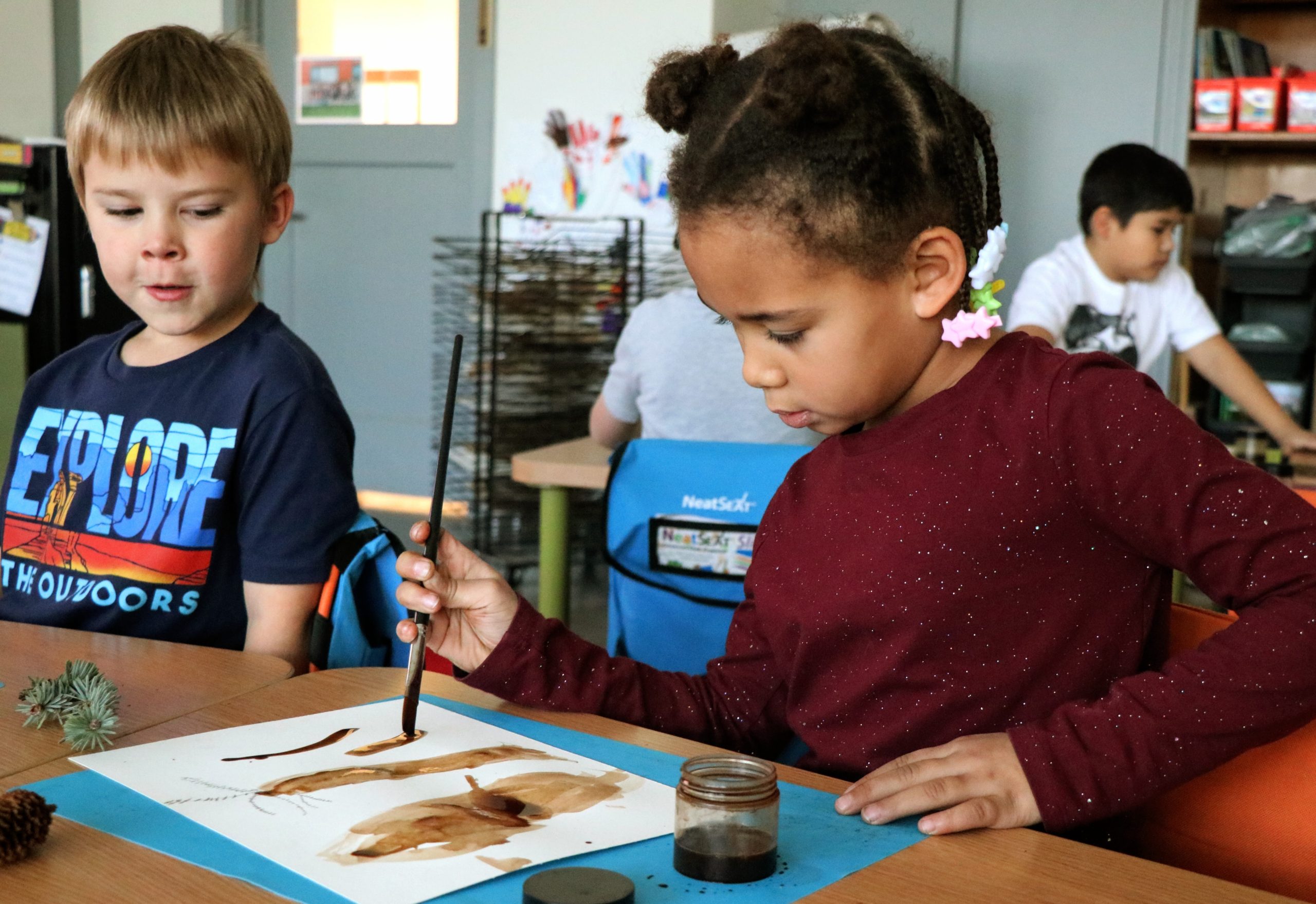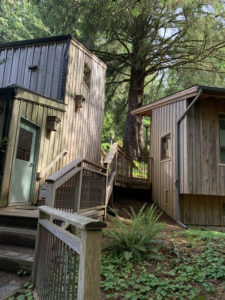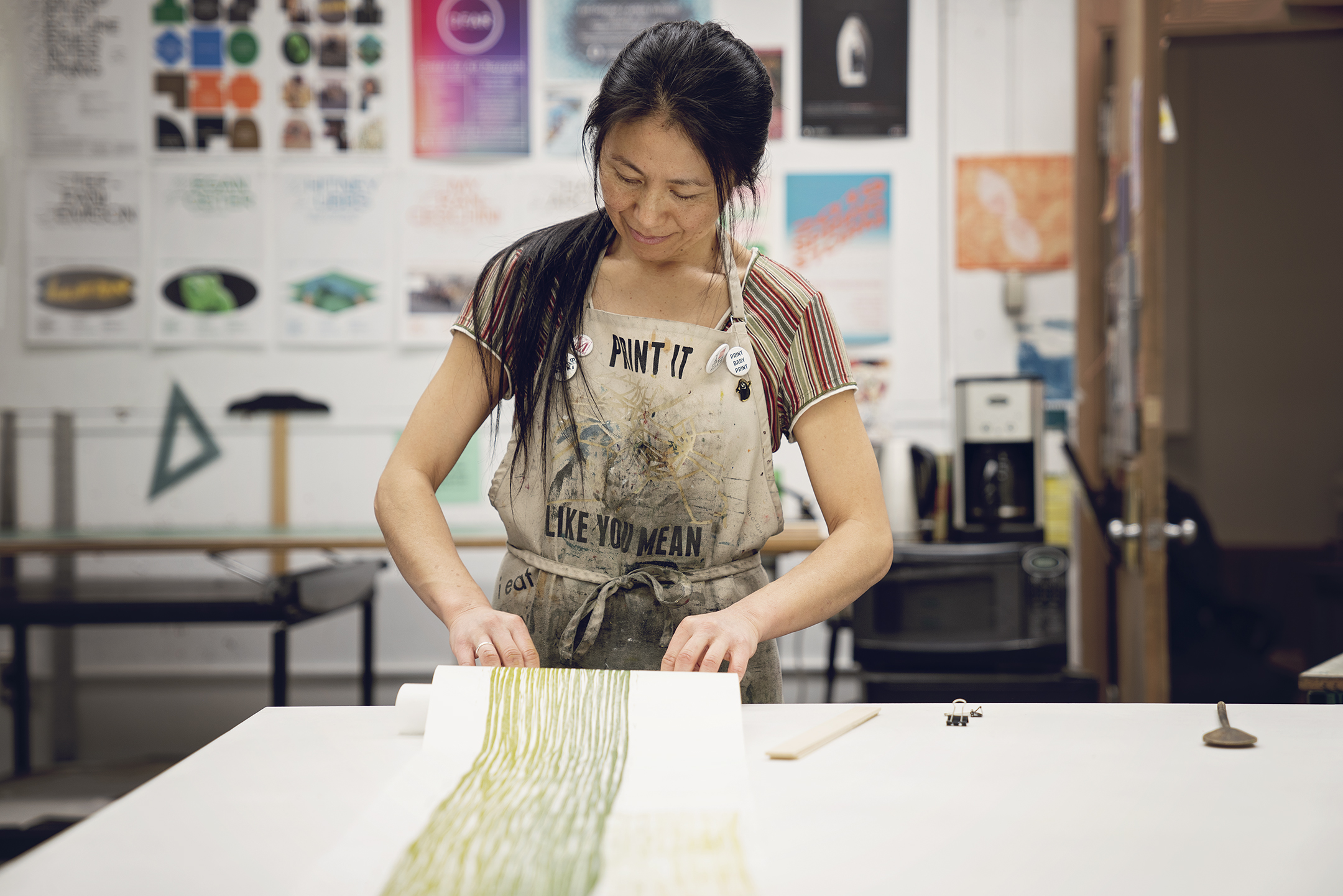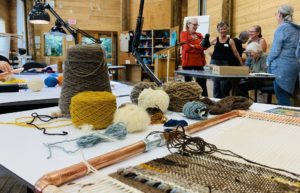
By OREGON ARTSWATCH
OTIS — Jonathan Case may best be known as an award-winning cartoonist, the author and the creator of the graphic novel Little Monarchs. But once upon a time, he was just a bullied kid growing up in rural Tillamook County.
Case didn’t have many friends, but he did have a passion for art. That passion led him to the Sitka Center for Art and Ecology, where he studied watercolor with an unlikely group of fellow students.
“I remember painting flowers and being the only boy amongst eight or 10 women in their 50s and 60s,” Case said. “It might sound awkward, but I was perfectly comfortable there. I liked that I could take my time on a piece of art. In a school setting, or at kids’ summer camps, I never had enough time to make what I wanted to make.”
Decades later, Case is at the front of the room, teaching summer classes to the young in Sitka’s recently developed Youth Art Programs. The programs are among several changes Sitka has made in recent years toward furthering its mission to meld science with art, a key to “restoring balance in our relationship with the natural world.”
“There have been some key evolutions and changes in the last year,” said the center’s executive director, Alison Dennis. “I don’t wish the pandemic on anyone, but it created opportunities for Sitka to look at things in fresh ways.”

The center sits on an 80-acre private nature preserve with a two-thirds of an acre campus on Cascade Head and marked its 53rd birthday in May. Founded in 1970 by artists Frank and Jane Boyden and other collaborators as a summer day camp for kids on the Oregon coast, the center now serves 5,500 people of all ages annually.
The biggest change has been to the Otis nonprofit’s residency program.
In previous years, Sitka offered two 3½-month sessions, one in the spring and a second in the fall, hosting 12 to 20 artists from across the arts and sciences fields who could commit to staying the full duration of the residency. That made the program efficient, but unintentionally eliminated numerous applicants.
“People who were getting invited were people who were financially secure, who had the means to take 3½-months off without financial setbacks,” Dennis said. “We now invite people to stay 2 weeks to 3 months. That immediately changed who was applying by every measure. In prior years, 20 percent of residents were people who identified as BIPOC or LGBTQ+. Now, over 75 percent of residents identify as BIPOC or LGBTQ+.”
Sitka also has opened its residencies to the Confederated Tribes of Grand Ronde’s Indigenous Place Keeping Artist Fellows. The fellowships, first offered in 2022, award stipends of up to $20,000 to artists with an “Indigenous connection to Western Oregon from the Lower Columbia River to the Klamath River.” Last year, Sitka hosted one artist for a one-week residency. This year, five fellows will be offered two-week residencies.
The partnership with Sitka is mutually beneficial, said David Harrelson, tribal cultural resources manager.
“As a local arts organization, Sitka brings artists in from around the country and even some guests from around the world,” Harrelson said. “A lot of those artists have a desire to connect with Indigenous people. Not only do we get this opportunity to hear artists talk in the small Grand Ronde community, we also sometimes inform their work. If they are musicians, we might talk about tribal music or hand drumming and how that works. It flows both ways.”

That flow is something that comes up often in conversations about the center, particularly as it relates to the more than 100, often waitlisted, workshops. During the summer workshop season, participants can study a varied list of nature-inspired topics such as drawing, painting, sculpture, scientific illustration, photography, fiber arts, printmaking, writing, poetry, fiber arts, and an extensive list of many more.
Monica Setziol-Phillips has taught woodcarving and other classes at Sitka for 12 years and has established a tradition of dining with students one evening during the workshop to exchange ideas about the importance of “nurturing our creative spirits.”
“The reason I ask for us to share a meal together is not to talk about what we have seen or done, our families and travels, etc., but rather what do we do, what can we do, to nurture our creativity?” Setziol-Phillips said. “The discussion is always interesting and varies from class to class, but I feel students find it of value, because creativity should be an essential part of our lives, of our humanity.”
The give and take with students is one reason Setziol-Phillips calls the class one of the highlights of her year.
Another is time she gets to spend on the campus, which includes five private apartments; five flexible art, writing, and music studio spaces; ceramics kilns; printing presses; woodworking tools; and a small art and ecology reference library – all nestled in a forest of Sitka spruce within earshot of the Pacific.
“It’s a very meditative and spiritual experience, a very meaningful time to me,” Setziol-Phillips said.
The connectivity inspired by the Sitka community is evident even in online events, another unexpected silver lining to the COVID cloud, Dennis said. In the past, on-site resident talks attracted a small group, perhaps up to 30, but now as many as 150 people from all over the country tune in.
“The most exciting part is that now people attending are past residents, or coming in soon, or thinking about applying,” Dennis said. “When I go back through Sitka archives, the desire for residents to connect with the community comes up again and again … Now with talks going online, that’s what has been happening. There is this lovely connection now between people who have been in residency, are in residency, people who are invited and coming, and people who are thinking about applying for residency.”

While Sitka has expanded its reach on multiple levels, perhaps nowhere is the center’s impact greater than with the community’s youth.
In 2020, the center took stewardship of what was formerly the nonprofit Community Art Project. The program had been operated in Nestucca Valley and Garibaldi grade schools for 30 years, but faced staff and resource difficulties, troubles amplified by the pandemic. The loss of the program in the rural community, where 95 percent of the students it served were considered economically disadvantaged, would have likely meant the end of any art classes. Now, the program is flourishing, said Misty Wharton, superintendent of the Nestucca Valley School District.
“Don’t get me wrong, CAP was amazing. Sitka took everything that was amazing and put it on steroids,” she said. “When you have someone who is not your teacher come into the classroom, the engagement is 100 percent. When you put on top of that someone from Italy who plays the cello, the engagement is 1,000 percent. What it does is create a memory for the teacher and the kids they can fall back on as they go into the future.”
Since Sitka took over the art program it has grown by 160 percent, reaching 1,300 pre-kindergarten through eighth-grade students — up from 500 kindergarten through sixth-grade students — across Lincoln and Tillamook counties and four school districts.
“Having Sitka’s presence and their buoying up the creative opportunities is pretty invaluable,” Case said. “It’s kind of a miraculous thing they have done over the years with all of their programming. I was struck by how much these kids cared about their creative output. Some kids, if they made a mistake on a piece they really cared about, were really crushed. Seeing what these kids came up with gives you hope for the future. They get excited, they get inspired, inspiration that can carry them through the low moments.”
- This story was originally published by our news partner Oregon ArtsWatch. It is supported in part by a grant from the Oregon Cultural Trust, investing in Oregon’s arts, humanities and heritage. For more arts news coverage go to Oregon ArtsWatch



